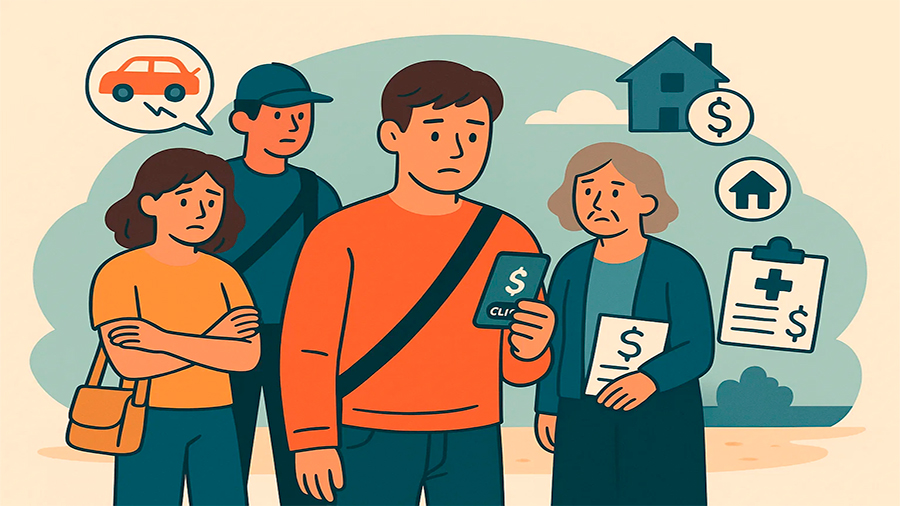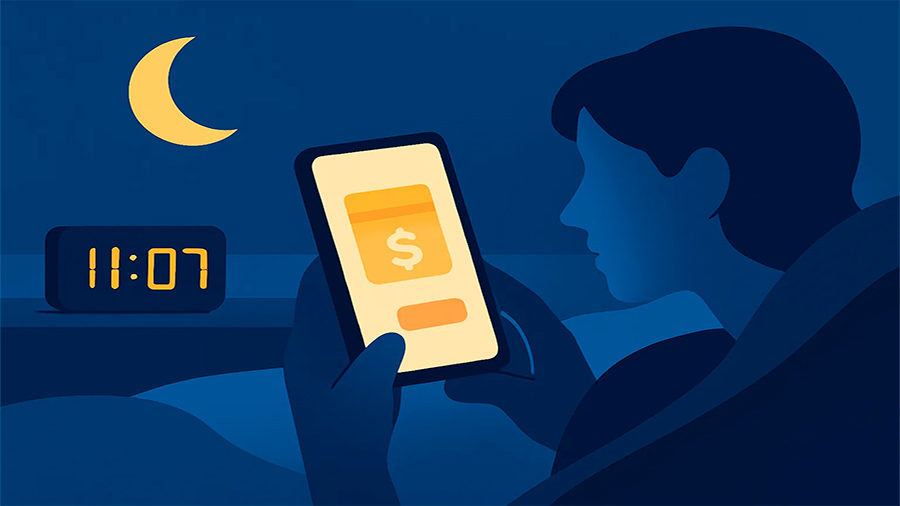With just one tap on your phone, you can now borrow hundreds — sometimes thousands — in under 30 seconds. The promise? Fast cash. No questions. No waiting. But here’s the catch: the faster the loan, the less time you have to think it through. That convenience comes at a cost — and not just financial. One-click loans are changing how we borrow, how we manage money, and how quickly we can fall into a trap.
The Appeal of Instant Borrowing
There’s no denying the appeal of one-click loans. You’re in line at a grocery store, your card is declined, and boom — a push notification offers a loan. It feels like a safety net. Lenders use sleek design, minimal friction, and behavioral nudges to get you from “maybe” to “approved” in seconds.
What Happens Behind the Screen
Many borrowers don’t realize the backend complexity. Algorithms pull your credit data, device metadata, and sometimes even behavioral signals to pre-approve you before you finish blinking. This isn’t just about making lending fast. It’s about making it irresistible.
Common Pitfalls of One-Click Loans
But that speed creates problems. When borrowing takes 30 seconds, most people don’t read the fine print — or worse, don’t see it at all. Some apps bury interest rates, late penalties, or automatic rollovers deep inside their terms. And if you miss a payment? You’re hit with more than just a fee. Your data may be shared with third parties, your credit can take a hit, and collection tactics may be aggressive.
Case Study: Typical Hidden Costs
| Loan Amount | Advertised APR | Actual APR with Fees | Late Penalty |
|---|---|---|---|
| $200 | 15% | 52% | $25 |
| $500 | 12% | 39% | $40 |
| $1000 | 10% | 28% | $75 |

Who Uses One-Click Loans — and Why?
The typical user isn’t a reckless spender. They’re people living paycheck to paycheck. Gig workers with uneven income. Young users with no credit history. For many, one-click lending feels like the only option when unexpected expenses hit — car repairs, medical bills, rent.
User Profile: Risk vs. Necessity
| Age Group | Most Common Use | Repayment Success Rate |
|---|---|---|
| 18–25 | Online purchases | 58% |
| 26–35 | Emergency bills | 71% |
| 36–50 | Debt consolidation | 65% |
Where Regulation Falls Short
One-click loans operate in a grey zone. Traditional banks are subject to heavy oversight. But many lending apps are built by tech firms, not financial institutions. They skirt full regulation by classifying themselves as “platforms” or “payment facilitators.” Some don’t even disclose APRs clearly, instead using vague “service fees.”
The Psychology Behind It
Apps tap into urgency bias. They know that when you’re financially stressed, your brain wants a solution now — not later. So, they offer easy buttons, countdowns, and pre-approved offers. This manipulates impulse and bypasses rational decision-making.
Better Alternatives You Might Miss
Many borrowers don’t realize there are safer options. Credit unions offer small emergency loans with fair terms. Some employers offer paycheck advances or hardship loans. Even personal loans from regulated lenders might be better in the long run, even if they take longer to apply for.
How to Protect Yourself
- Do I really need this loan right now?
- Can I repay it in full — even if things go wrong?
- Do I understand the interest, fees, and what happens if I’m late?
The Long-Term Impact of Fast Borrowing
While the money arrives instantly, the debt lingers far longer. One-click loans often come with short repayment windows — sometimes just 14 days. If a borrower can’t repay in time, they’re encouraged to roll over the loan or take another to cover the first. It’s a slippery slope. Interest compounds, and small loans become big problems.
These quick loans also create a pattern. Instead of planning finances or building savings, people get used to solving every gap with debt. That behavior weakens long-term financial resilience. The psychological weight of being constantly in debt — even in small amounts — affects mental health, productivity, and relationships.

Why Tech Lenders Thrive
Big tech firms entering finance have one major advantage: data. They know how you scroll, how long you hesitate, what time of day you spend the most. That insight gives them an edge in targeting users when they’re most vulnerable — usually late at night, during emotional moments, or after major purchases.
Country-by-Country: Regulation Examples
| Country | One-Click Loan Status | Consumer Protection Laws |
|---|---|---|
| UK | Allowed with FCA oversight | Mandatory APR disclosure, cooling-off periods |
| USA | State-dependent | CFPB enforces unfair practices, but gaps remain |
| India | Rapid growth, low regulation | New RBI framework in progress |
| Germany | Tightly controlled | Digital lenders must follow BaFin requirements |
The Role of Education and Financial Literacy
One of the reasons one-click loans gain such traction is because users often don’t know what to compare. Financial literacy remains low among digital-native users, especially younger borrowers who are used to frictionless experiences in shopping, subscriptions, and now, borrowing. Many don’t know what APR means, or how compounding interest can snowball even small debts into massive burdens.
How Employers and Institutions Can Help
Companies that employ large numbers of entry-level or gig workers have a unique opportunity to offer alternatives. Employer-sponsored loans, paycheck advances, or just clear guidance on credit options can make a major difference. Some forward-thinking firms now partner with nonprofit financial counselors to give employees a free second opinion before they borrow.
Borrowing in the Age of Apps: What’s Next?
The future of credit isn’t just about speed — it’s about context. We’re moving toward a world where your phone knows your habits, your location, your spending history, and even your stress level. Imagine a loan offer triggered not by your need, but by your moment of weakness — an argument, a rejection, a bad day. That’s the direction unchecked financial tech can go if left unregulated and unchallenged.
Red Flags to Watch For
- Loans that don’t list a clear total repayment amount.
- Apps with no customer service or contact info.
- Pressure tactics — “offer expires in 30 minutes.”
- Loans linked to unnecessary purchases or upsells.
The conclusion
One-click loans make borrowing dangerously simple. That’s not inherently bad — speed can be helpful in emergencies. But when convenience outruns caution, you need to hit pause. Learn the terms. Ask questions. And if an app won’t explain how it makes money, assume the profit is coming from you. Borrow when you must — but never blindly.

